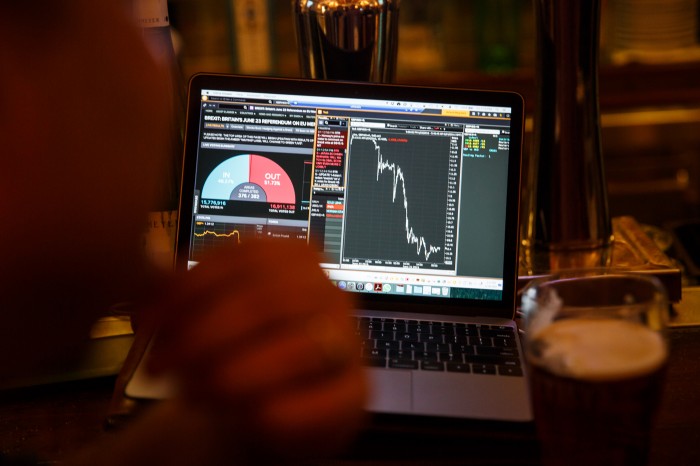Algorithms Probably Caused a Flash Crash of the British Pound
Overnight, the British pound dropped by 6 percent, to $1.13. Analysts are pointing the finger at an increasingly familiar financial scapegoat: the algorithm.
Though the crash hasn’t yet been definitively linked to algorithmic trading, the Economist argues that the speed of last night’s drop points at software gone haywire. Financial algorithms—or algos to those in the trade—can be prone to high-speed selling spirals, where a trigger point causes one piece of software to sell, driving down prices, which in turn activates the trigger points of another program, and so on, until things go badly wrong.

In this case, the trigger might have come from the Internet itself. Business Insider has published a hypothesis by Kathleen Brooks, research director at the financial broker City Index. She explained:
These days some algos trade on the back of news sites, and even what is trending on social media sites such as Twitter … Apparently it was a rogue algorithm that triggered [this] selloff after it picked up comments made by the French President Francois Hollande, who said if Theresa May and co. want hard Brexit, they will get hard Brexit.
At the time of the crash, only the Asian, Australian, and New Zealand markets were open, as the Guardian points out, and transactions were scant because traders were waiting for U.S. employment data to be published. With fewer trades happening, the arrival of odd transactions linked to the Brexit news may have had a bigger impact than usual.
Eventually, trades that were bringing down the price of the pound further were stopped, and its value recovered to around $1.24. That’s roughly where it was before the flash crash, having slid to a 30-year low earlier this week following the U.K.’s vote to leave the EU.
It’s not the most dramatic crash to be blamed on algorithms by any means. The infamous 2010 crash saw the U.S. stock market lose 1,000 points in minutes as a result of manic, software-driven selling. Since then, people have been busy working out ways to avoid the same thing happening again. Clearly, it’s a problem that hasn’t been solved yet.
(Read more: The Guardian, The Economist, Business Insider, “Watch High-Speed Trading Bots Go Berserk,” “How to Avoid Another Flash Crash,” “Why Scientists Are So Worried about Brexit”)
Deep Dive
Artificial intelligence
Large language models can do jaw-dropping things. But nobody knows exactly why.
And that's a problem. Figuring it out is one of the biggest scientific puzzles of our time and a crucial step towards controlling more powerful future models.
Google DeepMind’s new generative model makes Super Mario–like games from scratch
Genie learns how to control games by watching hours and hours of video. It could help train next-gen robots too.
What’s next for generative video
OpenAI's Sora has raised the bar for AI moviemaking. Here are four things to bear in mind as we wrap our heads around what's coming.
Stay connected
Get the latest updates from
MIT Technology Review
Discover special offers, top stories, upcoming events, and more.